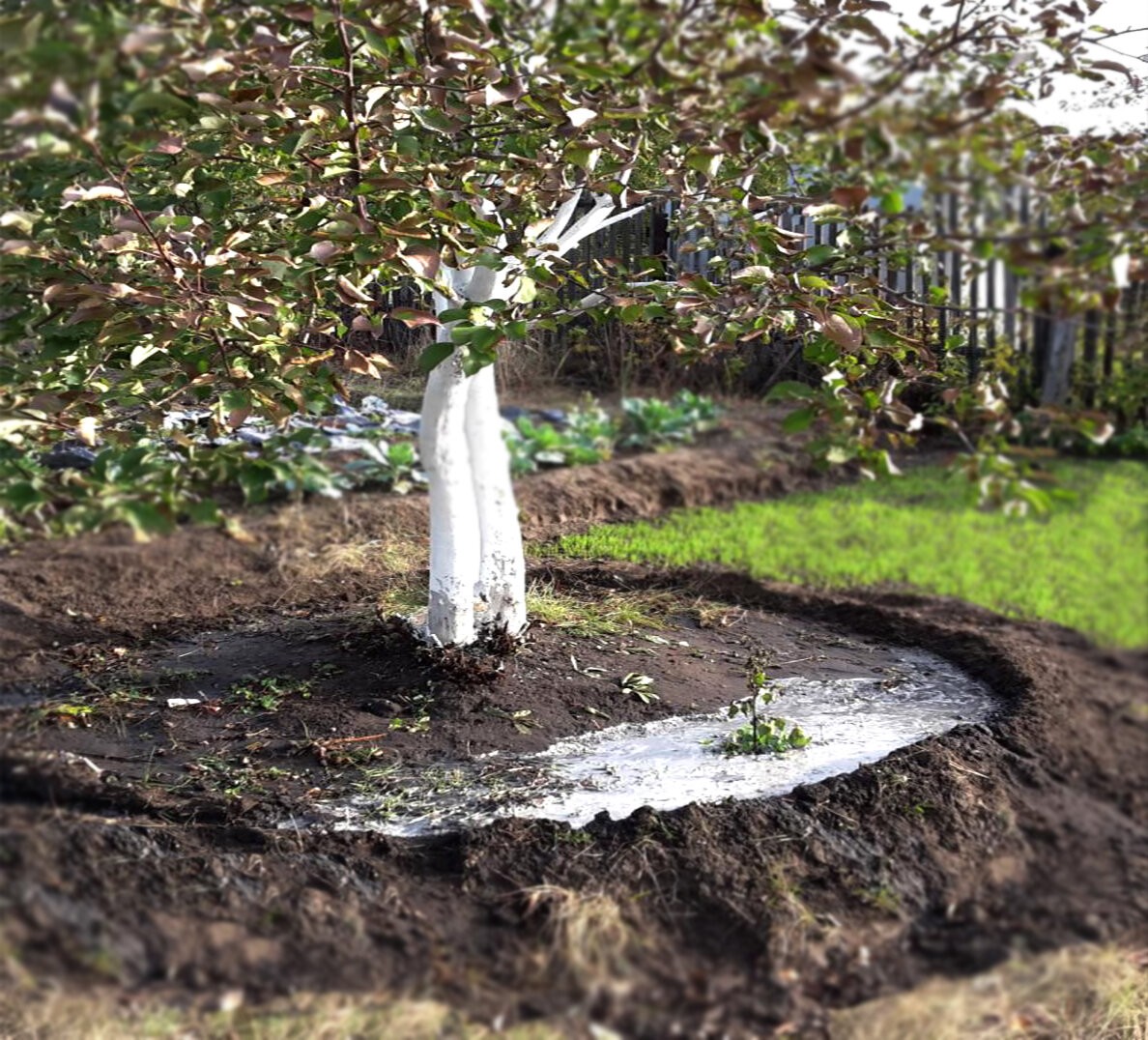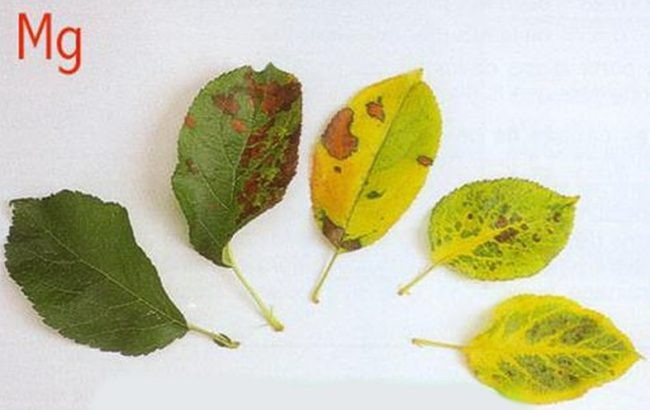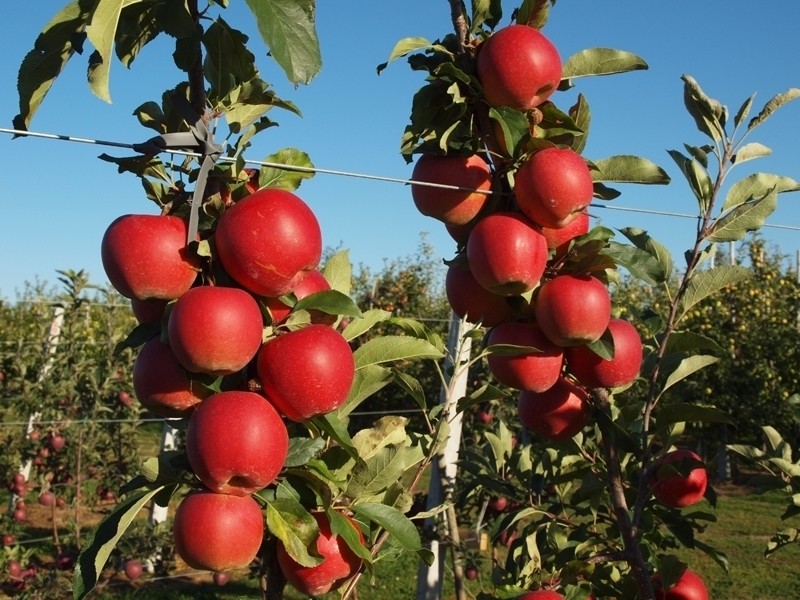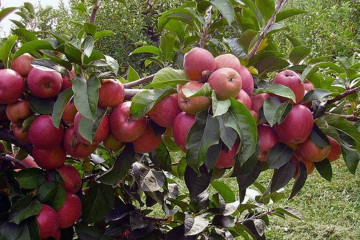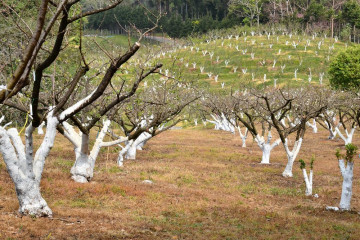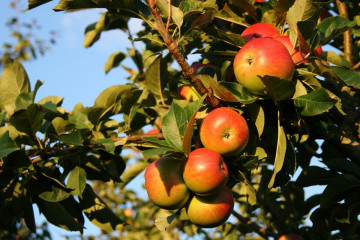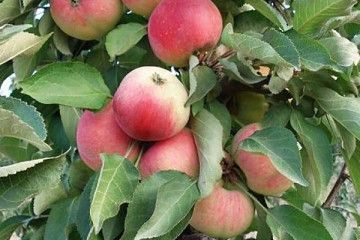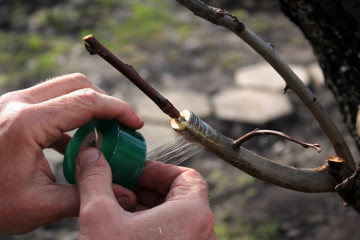How to feed an apple tree during fruiting
Content:
Every year, with the fruits of the apple tree, minerals are removed from the soil. Scientists have calculated that with each ton of harvest, the soil loses more than 2 kg of nitrogen, more than 1 kg of phosphorus and calcium, 3.5 kg of potassium, and 0.5 kg of magnesium and sulfur. To compensate for the depletion of soil fertility and to provide plants with nutrients during the period of fruit filling, it is necessary to feed the apple trees in the summer.
Why and when you need to fertilize apple trees
There may be several purposes for which you need to fertilize fruit crops during the season and in autumn. Depending on the purpose of feeding, the timing and methods of application, types of fertilizers are determined, a plant nutrition scheme is developed. Purposes and timing of feeding:
- Replenishment of soil fertility and long-term increase in tree productivity. Application term - autumn, early spring.
- To increase fruit setting - during the flowering period.
- For large, even-sized apples with a beautiful skin color, early and mid-early ripening - in June, late - in early July.
- To improve the taste and increase the keeping quality of the harvest of late-ripening varieties - at the beginning of August.
- To increase the winter hardiness of trees - in the second half of summer.
- For the treatment of tree diseases, recovery after frost damage, pests.
What fertilizers are applied under apple trees
For the correct development of trees, long and abundant fruiting, the apple culture needs a complex of macro- and microelements: nitrogen, phosphorus, potassium, calcium, iron, zinc, copper, boron, magnesium. Macronutrients are represented by mineral fertilizers in fertilizer or granular form. The complex of macro- and microelements is presented in organic fertilizers and complex organo-mineral chemicals in the form of soluble powders, granules or solutions.
How to fertilize apple trees: types of fertilizers
Let's take a closer look at the types of fertilizers used for feeding apple trees. They can also be used to optimize the nutritional level of pears and cherries.
Organic fertilizers for apple trees
Organic, in addition to nutrients, introduces a substance of plant origin, the basis of which is fiber and cellulose, which improves the structural parameters of the soil - density, air permeability, moisture capacity.
The following organic fertilizers are used to feed the gardens:
- weekly infusion of fresh horse manure, cattle in a ratio of 1:10;
- weekly infusion of chicken droppings at a dilution of 1:20;
- humus from manure with an exposure of more than 8 months;
- compost from a mixture of plant residues and garden soil;
- humates and lignohumates in liquid form.
The question of what to fertilize the apple tree is taken based on the capabilities and organizational structure of the economy.If there are livestock farms nearby that sell manure as fertilizer, or livestock are kept on the farm, then it is better to use organic matter of animal origin for good tree growth.
Mineral fertilizers
Granular mineral fertilizers can contain one, two or three macronutrients, as well as complex fertilizers with macro- and microelements. One-component fertilizers:
- nitrogen - urea, ammonium nitrate;
- phosphoric - simple and double superphosphate, bone meal, precipitate;
- potassium - potassium sulfate, potassium chloride.
Two-component fertilizers:
- nitrogen-phosphorus - azophos, ammophos, carboammophos, nitrophos, diammophos;
- nitrogen-potassium - potassium nitrate;
- nitrogen-calcium - calcium nitrate;
Three-component fertilizers:
- nitrogen-phosphorus-potassium - azofosk, nitroammofosk, diammofosk;
- nitrogen-phosphorus-sulfuric - sulfoammophos;
- nitrogen-phosphorus-magnesium - magnesium-ammonium phosphate.
Most companies produce multicomponent mixtures in which the nutrients are selected in the ratios required by fruit and berry crops. For example, for summer residents who are thinking about how to feed an apple tree, a good fertilizer is the Fertika-Lifpower chelate complex.
Ash is a potassium mineral fertilizer with a complex of trace elements and calcium of plant origin. This fertilizer can be easily obtained by yourself by burning organic matter. In this case, the mineral part, useful for plants, remains in the form of ash. Ash composition and percentage of substances depends on the initial combustion material.
Signs of a nutritional deficiency
To help the plant overcome nutritional problems in time, you need to know the signs of a deficiency of the main elements:
- lack of nitrogen in an apple tree - the leaves become smaller, become pale green, the growth of shoots slows down, the fruits are medium-sized;
- lack of phosphorus - some leaves turn red-purple, development is delayed, winter hardiness of trees decreases;
- lack of potassium - a dry border appears along the edge of the leaf, "marginal burn";
- lack of iron - the leaves become pale, whitish in color, the space along the leaf veins may remain green;
- lack of magnesium - the leaves turn yellow, fall off early, may remain green between the veins, sometimes chaotic brown spots appear;
- lack of zinc - the tops of young leaves have a black border;
- lack of copper - internodes become short, the plant is excessively bushy;
- the lack of boron is manifested by poor setting, deformation and cracking of fruits, a decrease in frost resistance of plants.
How to apply top dressing
The scientifically grounded scheme for applying fertilizers for apple trees for the Moscow region, south, north-west of Russia, Siberia and the Urals is timed to the phases of the growing season, so the timing is individual for each region.
First feeding in early spring before bud break
Applied fertilizers: compost, humus, azofoska, diammophos, magnesium-ammonium phosphate. Application technology and doses: root dressing in young orchards in a strip along the row with embedding of fertilizers and granules to a depth of 5-8 cm at a dose of 20-30 g of active ingredient per 1 running meter.
In adult gardens - pointwise in diameter 1.5-2 m from the trunk circle. Fertilizers should fall into the pits to an average depth of 15-30 cm, where the feeding roots are located. Dosage 150-200 g of active ingredient per 1 sq. meter.
Second feeding - before flowering
In May, before flowering, foliar dressing is carried out with solutions of fertilizing chemicals according to the instructions with a consumption of 0.4-0.5 liters of fine spray liquid under pressure per 1 tree. This measure ensures that the apple blossom will not crumble.
Third feeding during flowering
During the flowering period, foliar feeding with liquid complexes with boron is necessary, for example, Folirus Bor has proven itself well. Fine spray does not harm pollination.
Fourth dressing after flowering and at the beginning of ovary formation
For this top dressing, it is good to use infusions of manure and dung under the root. For adult trees, fertilizer is served in the pits around the trunk. After the manure has been applied, the plants will grow in moderation while also allowing the apples to be poured. Before ripening, to improve the storage of the crop, calcium nitrate is used in the form of spraying.
Fifth dressing after ripening and harvesting
It is carried out in the form of applying phosphorus-potassium fertilizers under the root in a dose of 150-200 g of active ingredient per plant. It is necessary to complete the formation of generative buds of the next year and to increase the winter hardiness of trees.
Tips and tricks from experienced gardeners
Most often, novice gardeners have questions:
- how to feed a young fruitless apple tree in summer. In young trees and seedlings, the root system that begins to grow after planting often lags behind in development. Spraying with humic complexes 2-3 times during the summer period helps to balance the growth of the aboveground and underground parts of the tree;
- how to feed columnar and undersized apple trees. Such trees usually carry an increased load. When planting, 10-12 kg of rotted manure and 40-50 g of fertilizer, including nitrogen, phosphorus and potassium, are introduced into the holes. After 2-3 years, they begin to fertilize the trees according to the scheme with five dressings;
- how to feed an aging apple tree during fruiting. Such trees need support in the form of organic matter, since the functioning of their roots is normal, and aging branches can dry out, soot fungus and other parasitic organisms settle on them.
Without exception, all apple varieties are responsive to improving nutritional conditions. Using the above fertilization scheme, you can achieve a high yield of fruits with a normal content of nutrients, which will be stored until the next harvest.
